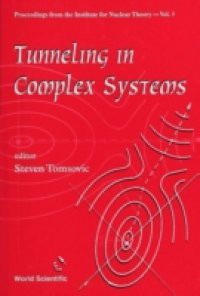Quantum tunneling is an intriguing phenomenon arising in a multitude of physical contexts. New experiments in systems as wide ranging as superdeformed nuclei, Bose-Einstein condensed gases, and nanomagnetic systems are spurring theoretical studies into the fundamental nature of tunneling. In this volume, the articles include: (i) tunneling out of a metastable state, (ii) coherence between two wells in tunneling contact, (iii) the consequences of the nature of the underlying dynamics (i.e. regular motion, chaos or some mixture) in low-dimensional systems and its connection to newly identified tunneling phenomena such as chaos-assisted tunneling, (iv) nanomagnetic systems with focus on comparing environmental descriptions of nuclear spins and oscillators, (v) solitons in Bose condensates, (vi) tunneling out of the nuclear superdeformed well and its use as a probe of pairing and chaos in excited nuclear states, and (vii) problems linked to the Bose condensed phase of atomic alkali gases.These subjects and others are gathered in six pedagogical courses given during the spring of 1997 at the National Institute of Nuclear Physics program “Tunneling in complex systems”. The purpose of the courses was to give graduate students and postdoctoral researchers exposure to a sampling of such recent theoretical advances and experimental contexts of tunneling as well as a bridge for the communication gaps between researchers in the various fields concerned with tunneling.Contents:Some General Aspects of Quantum Tunneling and Coherence: Application to the BEC Atomic Gases (A J Leggett)Tunneling in Two Dimensions (S C Creagh)Quantum Environments: Spin Baths, Oscillator Baths, and Applications to Quantum Magnetism (P C E Stamp)Coherent Magnetic Moment Reversal in Small Particles with Nuclear Spins (A Garg)Tunneling from Super- to Normal-Deformed Minima in Nuclei (T L Khoo)Solitons in the Bose Condensate (W P Reinhardt)Readership: Physicists in any domain working or interested in the theory of tunneling, BEC, superdeformation and nanomagnetic systems.Key Features:Practical, easy, and quick reference to most important issues in stroke careEach topic addressed concisely in a 2-page step-by-step approachUniformed and user-friendly format presented sequentially, simulating actual stroke patient encounterCan be adapted for use as stroke treatment protocols in the stroke unit, wards, emergency room, and clinics

